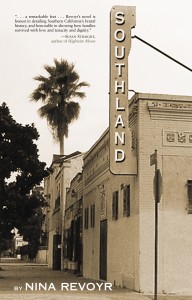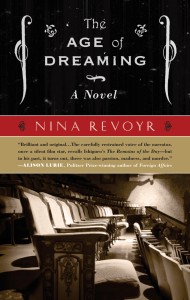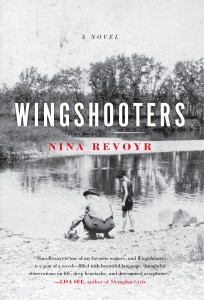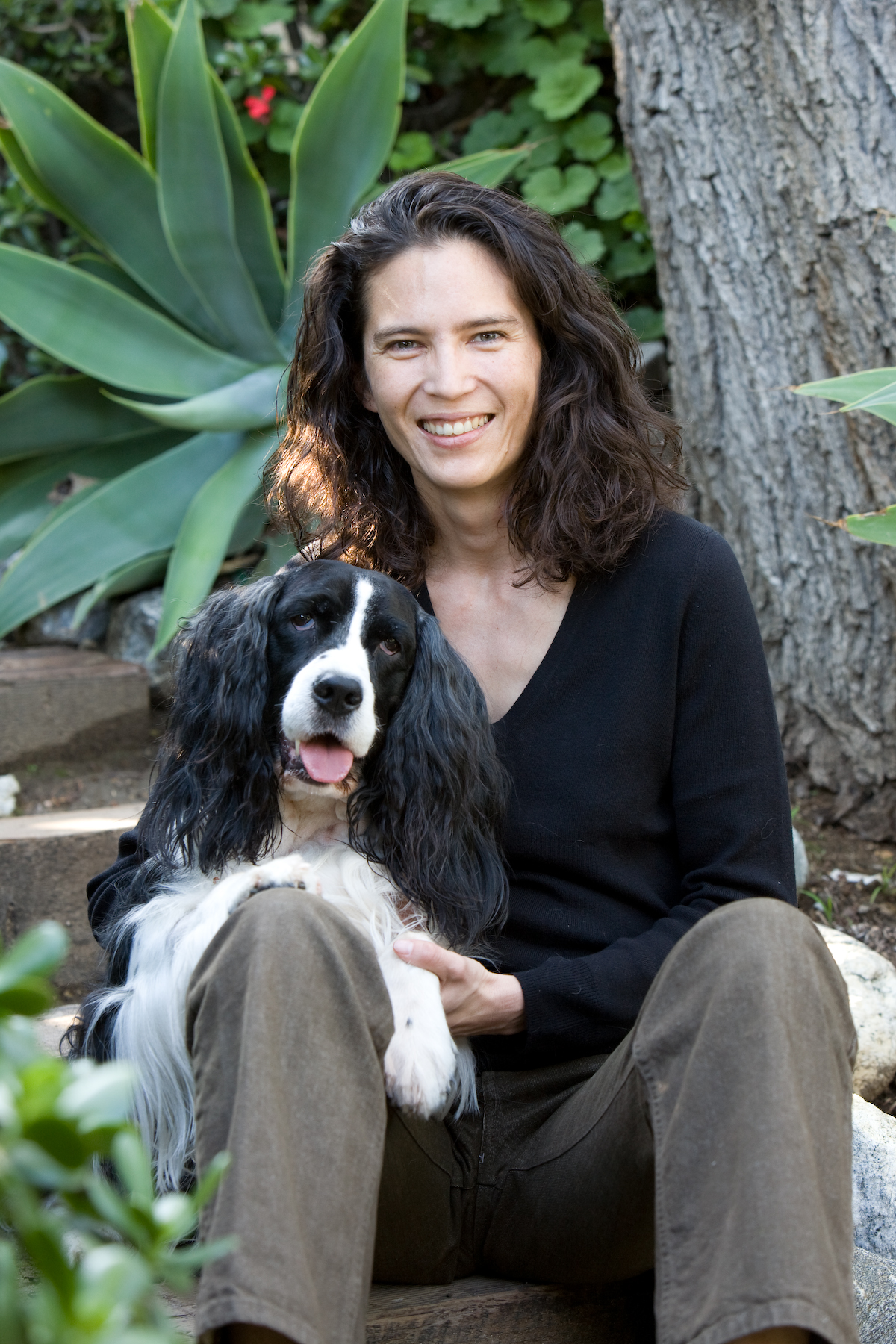Bridging Communities of Color Through Nina Revoyr’s Fiction
by Ann Matsushima Chiu
Ann Matsushima Chiu (AMC): Please introduce yourself and briefly describe your literary work and career path to date.
Nina Revoyr (NR): I’ve published four novels and am well into my fifth. On the surface, the books are all very different. The first two (“The Necessary Hunger” and “Southland”) are set in urban, inner-city Los Angeles; the third (“The Age of Dreaming”) is set in Little Tokyo and Hollywood during the silent film era; and the fourth (“Wingshooters”) takes place in rural Wisconsin. I try to do something new and maybe surprising with each book—if I’m not at least a little nervous about tackling a new project, I’m probably not pushing myself hard enough.
I also have a full life outside of writing. I’m the Executive Vice President of Children’s Institute, Inc., which is a large nonprofit organization in Los Angeles that serves children and families affected by trauma and poverty. I’ve also been a visiting professor at several colleges and universities—most recently Occidental College here in L.A.
As for libraries, it’s a big concern that there have been so many cuts—in California there are libraries being consolidated, having hours cut, being closed altogether. And libraries are not just places to get books; they are vital parts of communities. I would not be the writer I am without libraries.

AMC: Please describe your work and any associated goals you may have for each.
NR: Although all my books are different, they do have some things in common. With each book, I try to tell stories that haven’t been told before. Often this includes writing not just about communities of color, but also about how those communities interact with each other—like the Japanese American and African American characters in “The Necessary Hunger” and “Southland.” Or about people in unexpected or unusual situations—like the Japanese silent film star in “The Age of Dreaming.” Several of the books are also set in the past and could be considered historical, and two of them have a noir-ish flavor. No matter what the setting or structure is, though, I always try to create strong characters and tell good stories. I want to write books that people enjoy reading. By virtue of who the characters are and the situations I put them in, I hope to compel readers to think about issues of race, community, love, family, the things we have in common, and the things that make us different. I hope to complicate and deepen what we think we know about people. But none of that can happen if I don’t do the fundamental thing first—create characters whose stories readers care about, and want to read.
AMC: How does your own personal diversity influence your writing? The diversity of your readership?
NR: I’m diverse in a number of ways, and I don’t easily fit in pre-determined boxes. I’m a mixed-race Japanese American who was born in Japan, and whose family is still largely there. I then lived in rural Wisconsin in a very homogeneous white environment. From there I moved to Los Angeles, and lived in an area that was largely African American and Latino. I’m gay. Because of all this, my own life—and the stories I write—don’t necessary jibe with expected experiences or narratives. I have been deeply shaped by all of those contexts—Japanese, blue-collar white, Japanese American, urban black and Latino. I feel enriched by all of them. So the worlds I write about—

like the worlds I live in—reflect these different influences and mixtures. One of the reasons I love the Crenshaw area—the community at the heart of “Southland”—is because of this very organic, not-forced mixture of people from different races and cultures, and particularly the deep ties between the African American and Japanese American residents. The settings I feel most comfortable in are multi-racial settings, with people who have all sorts of backgrounds, experiences, religious and political beliefs, sexual orientations. And yet I can and do move in more mono-racial settings as well. The readers of my first few books were largely people of color and progressive whites. With “Wingshooters,” though, the readership expanded. In addition to the folks who’d read the other books, there was a really large response from white readers, particularly Midwestern readers, some who were very different from me politically—very conservative. I met many of them during my book tour, and it was truly wonderful and humbling. I think the working class white characters in that book—and the ways I portrayed how people grapple with race—allowed readers to have discussions about race and community they might not have had otherwise.
AMC: What has writing taught you?
NR: A lot! It’s taught me patience and faith—the belief that doing work in increments, but doing it consistently, will eventually lead to a larger good. It’s taught me the importance of enjoying the process itself, because you never know what will happen once a book is published in terms of response, or if it will be published at all. It’s taught me that—despite what you often hear from teachers of writing—inspiration is just as important as perspiration. Maybe even more so. Without passion, without vision, without a reason to write, it doesn’t matter how much time you put in: the writing itself will be flat. Writing has also taught me to really look at the world—to observe and enjoy it, to appreciate what it has to offer. And it’s made me live in a fuller way, too. Writing is wonderful, and I love it, but sometimes sitting at my desk can’t compete with a gorgeous sunrise or a hike through the mountains or even a football game. And that’s fine. It’s a big wonderful world out there, and I like to be in it.
AMC: What advice would you give librarians and information professionals, especially those from diverse backgrounds, who work with diverse populations, promote literacy and readership?

NR: I’d say, share what you love. Your enthusiasm is contagious. And also draw connections for readers. A potential reader might think, well, the characters in this book are of a different background than me, so I won’t connect with them. The librarian—or the independent bookseller, or the book group leader, or the teacher—can help make those links for people. Readers—especially those who are fairly new or who haven’t been exposed to a lot of fiction—sometimes need a translator or a tour guide. And you’d be surprised at the results. I’m thinking, for example, of a program we did through my agency, a variation of the National Endowment for the Arts “The Big Read” program in prisons. It was amazing to see how the young men connected with books like “The Call of the Wild” and “To Kill A Mockingbird.” They identified with Buck in “The Call of the Wild”—his fight for survival, his honor, the brutality of his world. And they identified—the guys!—with Scout in “To Kill a Mockingbird,” because of her pluck. They also all yearned for an Atticus, since so many of them didn’t have fathers. These are books that they might not have picked up on their own. But they did, with a teacher, and in some cases the young men changed their lives.
AMC: What current trends in publishing, reading habits, and distribution of library materials concern you the most? What thoughts do you have on these trends?
NR: Honestly, I don’t know enough about trends in publishing to speak much about them. But I can say that I’m blessed to be published by a great independent press that has always been very supportive of me. I keep hearing—as we all do—that reading is dead, that people’s attention spans are shot because of the Internet and constant connectivity. And yet book clubs and book festivals are doing better than ever, so I’m not sure how that computes. For me, the Internet is a mixed blessing—a great resource, but also a time suck. I actually disconnect completely when I write—I hole up in the mountains where there’s no cell phone reception and no Internet access for miles. Fortunately, those places still exist! As for libraries, it’s a big concern that there have been so many cuts—in California there are libraries being consolidated, having hours cut, being closed altogether. And libraries are not just places to get books; they are vital parts of communities. I would not be the writer I am without libraries. Library staff are my heroes—which is why I made one of the main characters in “The Age of Dreaming” the programming director at the L.A. Public Library.
Editing assistance provided by Jaena Rae Cabrera.

